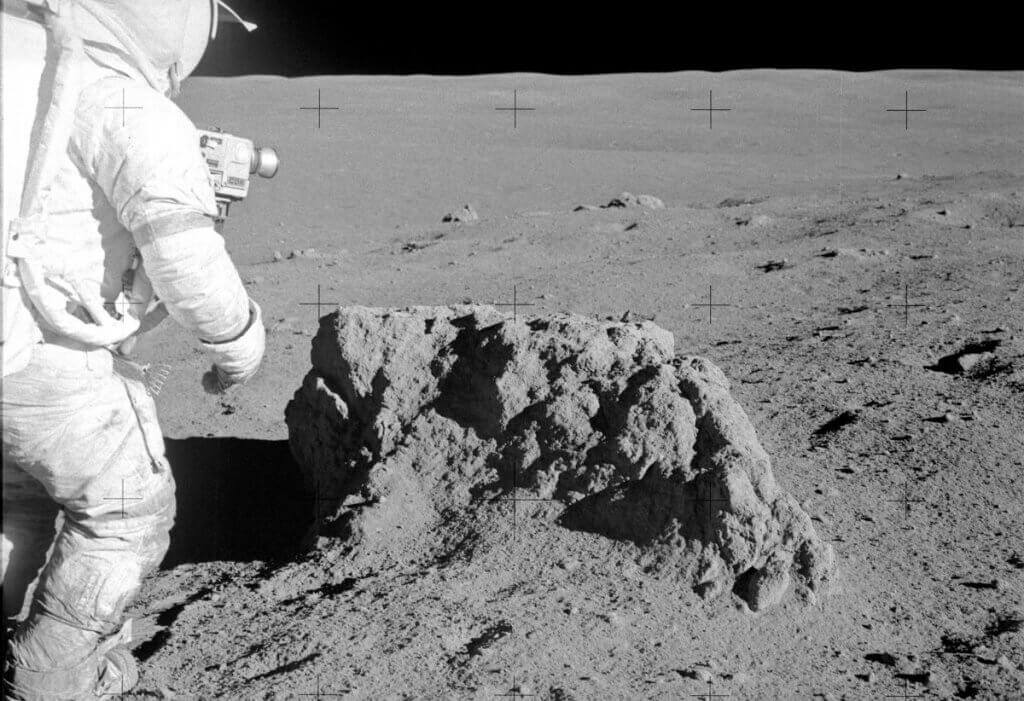Astronomers are exploring solutions to mitigate climate change, one of humanity’s biggest challenges, by using some tiny players — dust particles.
In recent research, they propose mining, scooping and blasting dust from the moon‘s surface and placing it between Earth and the sun, where the newly placed clouds would shade our planet for a few days before solar wind and radiation pressure dispersed them. In a year, researchers say, such dust shields could reduce Earth-bound sunlight by 1.8%, which falls within the range needed to slow our planet’s rising temperature.
Creating such a shade would require 22 billion pounds (10 billion kilograms) of dust per year, which is “roughly 100 times more mass than humans have sent into space to date,” the authors wrote in their study.
Related: Causes and effects of climate change
How many launches would that take?
“From Earth, about 700x more launches than we’ve done to date,” Benjamin Bromley, an astrophysicist at the University of Utah and the study’s lead author, told Space.com in an email. “But from the moon, we envision an electromagnetic launcher, whose specifications are not yet determined.”
The astronomers are suggesting that dust particles could be used to block sunlight before it reaches Earth. This proposed solution is not new. In 2012, astronomers ambitiously considered pushing the largest near-Earth asteroid, the 22-mile-wide (35 kilometers) 1036 Ganymed, between the sun and Earth to both create a dust cloud and gravitationally hold it in place. Astronomers have also explored expensive and resource-intensive geoengineering projects like gigantic screens and reflective mirrors to cool Earth.
The newly proposed solution uses dust readily available on the moon’s surface, so it would be simpler, cheaper and more effective compared to previous methods, researchers argue. (Launching from the moon requires much less energy than launching from Earth, because lunar gravity is just one-sixth as strong as that of our planet.)
The team analyzed the sizes, shapes and compositions of different particles like coal dust, porous glass, sea salt and moon dust. They also compared the effectiveness of launching dust from a platform in space to blasting it from the moon’s surface. Once placed at or near the first Lagrangian Point, or L1 — a gravitationally stable spot between the sun and Earth, about 1 million miles (1.5 million km) from our planet — the team used computer simulations to study how long these particles would hover.
For example, in their modeling work, researchers launched a test particle from the moon’s northern pole to an orbit close to L1. They found that the particle, launched at 1.7 miles per second (2.8 km per second), spent a total of five days in front of the sun before being dispersed.
The team concluded that launching moon dust at about 1.9 to 3 miles per second (3 to 5 km per second) toward L1 would be the most promising strategy, shading Earth for the equivalent of up to a week every year. For such an effort, they estimated an energy equivalent of about 2,500 Saturn V rocket launches would be needed.
“It is amazing to contemplate how moon dust — which took over four billion years to generate — might help slow the rise in Earth’s temperature, a problem that took us less than 300 years to produce,” Scott Kenyon, an astrophysicist at the Harvard-Smithsonian Center for Astrophysics and a co-author of the latest study, said in a statement (opens in new tab).
The researchers say their study only evaluates the potential impact of this approach, as it could be “an option in addressing climate change if what we need is more time,” Bromley said in a different statement (opens in new tab). The logistical, legal and technological challenges of implementing such an effort are not touched upon in the study.
One of the important unknowns, for example, is the impact of repeatedly placing huge amounts of dust at or near L1 orbits, which is home to NASA’s Solar and Heliospheric Observatory as well as the Deep Space Climate Observatory.
“In most scenarios, dust would steer clear, but we have not checked in detail,” Bromley told Space.com in an email.
The research is described in a paper (opens in new tab) published last month in the journal PLOS Climate.
Follow Sharmila Kuthunur on Twitter @Sharmilakg. Follow us on Twitter @Spacedotcom (opens in new tab) and on Facebook (opens in new tab).

